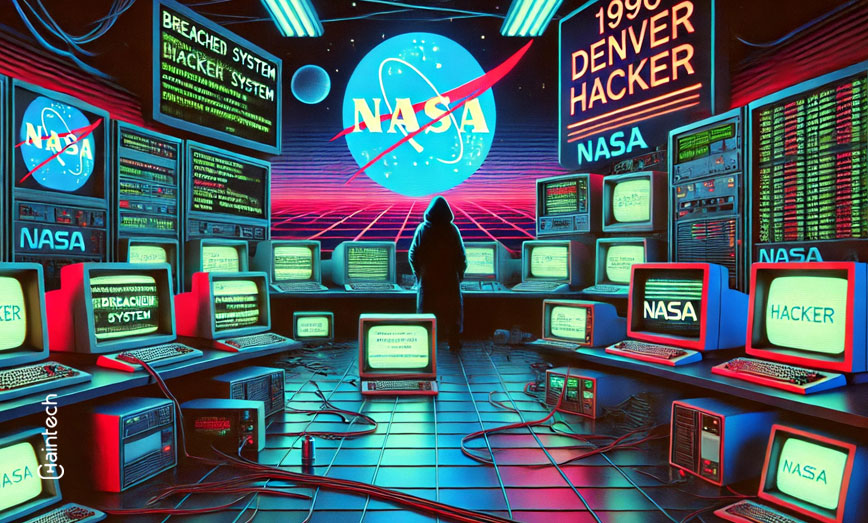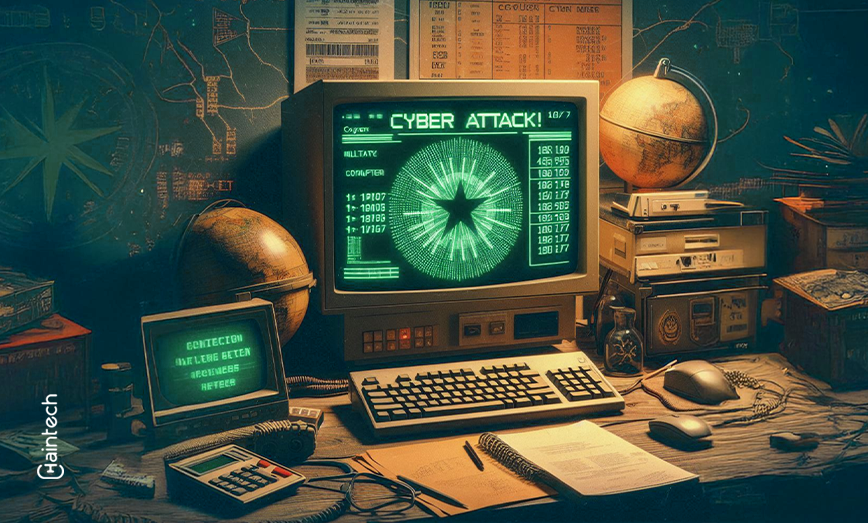Denver and the 1990 NASA Hacker Scandal

How could a single hacker sit in their home cause chaos at NASA? This is what happened in 1990, when a delinquent hacker from Denver was able to enter NASA’s computers and connect to the NASA systems up from the city of Huntsville beside numerous others on separate occasions.
Also, using nothing else but a personal computer connected to a phone line, this hacker managed to find his way not once to NASA’s servers in the cities of Huntsville and Greenbelt. This incident in 1990 opened the eyes of NASA and was proof of how even the strongest of networks could be weak in particular aspects.
This wasn’t just a one-time breach, it happened more than once, and many more questions arose. However, one man failed to understand the actions taken by NASA for the security of its computers. And what was the lesson learned by NASA from there after? Let us go into what really happened and the outcome, as well as an analysis of such a notorious case of hacking.
Small Hack, Big Changes: How a Lone Hacker Reshaped NASA’s Cybersecurity
- The 1990 Denver Hacker Incident exposed critical security flaws in NASA’s computer systems.
- A lone hacker using simple tools managed to break into NASA’s network multiple times, showing that even basic attacks can succeed.
- This incident led to changes in how NASA handled cybersecurity, pushing for stronger security measures and better incident response plans.
How the 1990 Denver Hacker Incident Happened
The Denver hacker didn’t use anything fancy. The hacker used a basic setup—a personal computer and a phone line. This alone was enough to get into NASA’s computers. The hacker targeted NASA’s systems in Huntsville, Alabama, and Greenbelt, Maryland. Each time the hacker gained access; it raised more alarms about how vulnerable NASA’s systems were.
The hacker didn’t break in just once. Moreover, there were multiple breaches, which meant that NASA’s security wasn’t just weak—it was broken. Furthermore, the hacker found ways to bypass NASA’s security controls and gain access over and over again. As a result, it became evident that NASA’s defenses were inadequate. Meanwhile, each breach highlighted vulnerabilities in their existing systems. Consequently, this was a clear sign that NASA’s security measures were outdated.
Subsequently, it became apparent that these measures were not designed to handle even simple cyber threats. In addition, the repeated breaches exposed a lack of proactive monitoring. Eventually, this incident served as a wake-up call for NASA to overhaul its security systems. Ultimately, it demonstrated the critical need for stronger cybersecurity infrastructure in high-stakes environments.
Did You Know?
The hacker accessed NASA’s systems more than once, showing how long a breach can go unnoticed without proper security.
Methods Used: How Did the Hacker Break Into NASA?
The way the hacker got into NASA’s computers was shockingly simple. Here’s how it went down:
- Using Basic Tools: The hacker used a personal computer and connected to NASA’s network through a regular phone line. No high-tech gadgets were involved.
- Exploiting Weak Security: The hacker took advantage of weak access controls. NASA’s security wasn’t tight enough to keep the hacker out.
- Multiple Access Points: By finding different vulnerabilities, the hacker accessed NASA’s systems multiple times without getting caught right away.
- Threat to Data: The hacker didn’t just snoop around—there was potential to alter or destroy sensitive data, which would be a big problem for NASA.
- No Need for Advanced Skills: The hacker didn’t need advanced hacking skills. The tools were basic, and the breaches relied more on NASA’s weak defenses than on the hacker’s expertise.
The Impact on NASA: What Did the Hack Mean?
The Denver hacker incident wasn’t just an embarrassing security breach for NASA—it had real consequences. Here’s a quick look at how the incident impacted NASA:
| Impact Area | Description |
| Data Breach | Sensitive data was at risk of exposure, raising major concerns. |
| System Integrity | The hacker had access to alter or delete information, threatening stability. |
| Operational Disruption | Unauthorized access could have disrupted NASA’s operations. |
| Reputational Damage | Public trust in NASA’s ability to protect information took a hit. |
| Highlighting Weaknesses | It showed how easy it was for a hacker to get in, exposing weak points. |
The impact of the breach wasn’t just about the hacker getting in. Moreover, it was about showing the world that NASA’s security wasn’t as strong as everyone thought. Furthermore, the breach sent shockwaves through the tech and aerospace communities. As a result, NASA faced significant scrutiny over its cybersecurity practices. Meanwhile, the public perception of NASA’s technological superiority took a hit.
Consequently, the incident was a big blow to its reputation. Subsequently, it became a clear signal that NASA’s cybersecurity needed serious improvement. In addition, the breach underscored the growing sophistication of cyber threats. Eventually, NASA had to address the gaps in its systems to regain trust. Ultimately, this breach highlighted the urgent need for robust and future-ready security measures.
Expert Insights: What the Hack Revealed About NASA’s Security
Cybersecurity experts point to the 1990 Denver Hacker Incident as a clear example of how big organizations can be vulnerable to small-scale attacks. The hacker didn’t use complex tools or deep technical knowledge. Instead, the attack relied on basic security gaps that NASA had not addressed.
The incident showed that NASA’s network security protocols were outdated, and it would appear that access restriction measures and updating of technology norms would only have made the agency’s positions even stronger, according to experts. The limited nature of threats also emphasizes the necessity of constant vulnerability testing and response to the increasing evolution of threats.
NASA’s Response: What Actions Were Taken Once the Breach Occurred?
NASA knew they had to act fast. The 1990 hacker incident forced them to take a hard look at their security protocols. Here’s what they did:
- Network Security Overhaul: NASA started by reviewing its entire network security system. They looked for weak spots and updated their protocols to prevent future breaches.
- Improving User Authentication: NASA knew their authentication methods were weak. They considered adding multi-factor authentication to make it harder for unauthorized users to get in.
- Building an Incident Response Plan: The incident made it clear that NASA needed a solid plan for handling security breaches. They worked on creating a response plan that could quickly address any future threats.
These steps were essential in helping NASA rebuild its defenses and show that they were serious about cybersecurity.
Lessons Learned: What NASA—and Everyone—Learned from This
The 1990 Denver Hacker Incident taught NASA—and many other organizations—a few critical lessons about cybersecurity. Here’s what we can take away from it:
- Stay Proactive: Waiting until a breach happens is too late. Organizations need to constantly update and test their security protocols.
- Simple Tools Can Cause Big Problems: The hacker didn’t need advanced skills or equipment, proving that even basic tools can be dangerous if defenses aren’t solid.
- Stronger access controls are key: Weak access controls make it easy for the hacker to get in. Improving these controls can prevent unauthorized access.
- Have a Response Plan In Place: A good plan can mitigate the harm and damage inflicted by a breach and get systems back on the right track.
These lessons illustrate the necessity of not only protecting systems with security measures but also improving on those measures over time.
NASA’s network security was so outdated that it allowed unauthorized access multiple times before it was fully addressed.
Reflecting on the 1990 Denver Hacker Incident
The term ‘breach’ cannot fully define the 1990 Denver Hacker Incident. This incident demonstrated the need for stronger security measures and preventive tactics that other organizations lacked. With just a computer and a telephone, a single culprit was able to take down some of NASA’s security layers, clearly indicating that no system, however advanced, is 100 percent secure.
How NASA managed the incident made it very clear that even massive institutions will have to be on their toes and keep changing their mode of securing themselves.
This incident brings home the point that cybersecurity is and must be embedded within business strategies. Defense postures have to be improved. Organizations need to have sensible incident response mechanisms in place. Organizations also should learn not to ignore any threat, even if it is provoked by the simplest of means, as damage can be done.
FAQs
- What are the means through which a hacker was able to access NASA computers in the year 1990?
The offending hacker had his computer and home phone line. The weak access control of the NASA network meant he gained unauthorized access.
- 2. What was the main impact of the Denver hacker incident on NASA?
The incident exposed vulnerabilities in NASA’s cybersecurity, posed risks to sensitive data, and damaged NASA’s reputation for keeping information secure.
- How did NASA respond to the hacker incident?
NASA enhanced its network security, improved user authentication processes, and developed an incident response plan to better handle future breaches.
- Why is the 1990 hacker incident significant?
It was crucial because it demonstrated that even highly sophisticated bodies like NASA were at risk when attacks of a rudimentary nature were launched, which led to the conclusion that there was an urgent need to patch up some areas and bolster others.
- What lessons were learned from the Denver hacker incident?
Some of the major lessons were that security should not be reactive, measures should be made more restrictive universally, and that a clear response to IT security incidents is in place.









